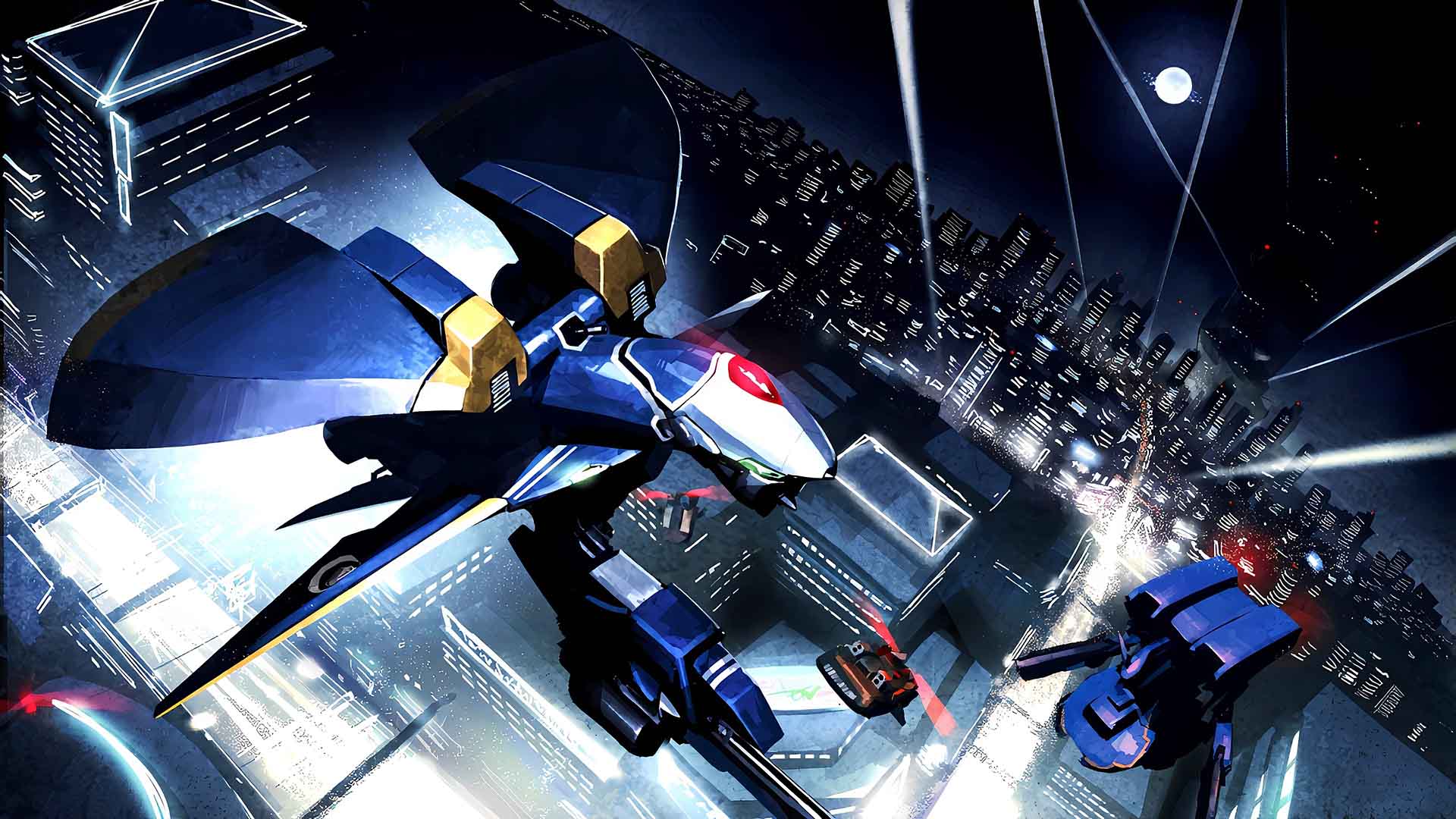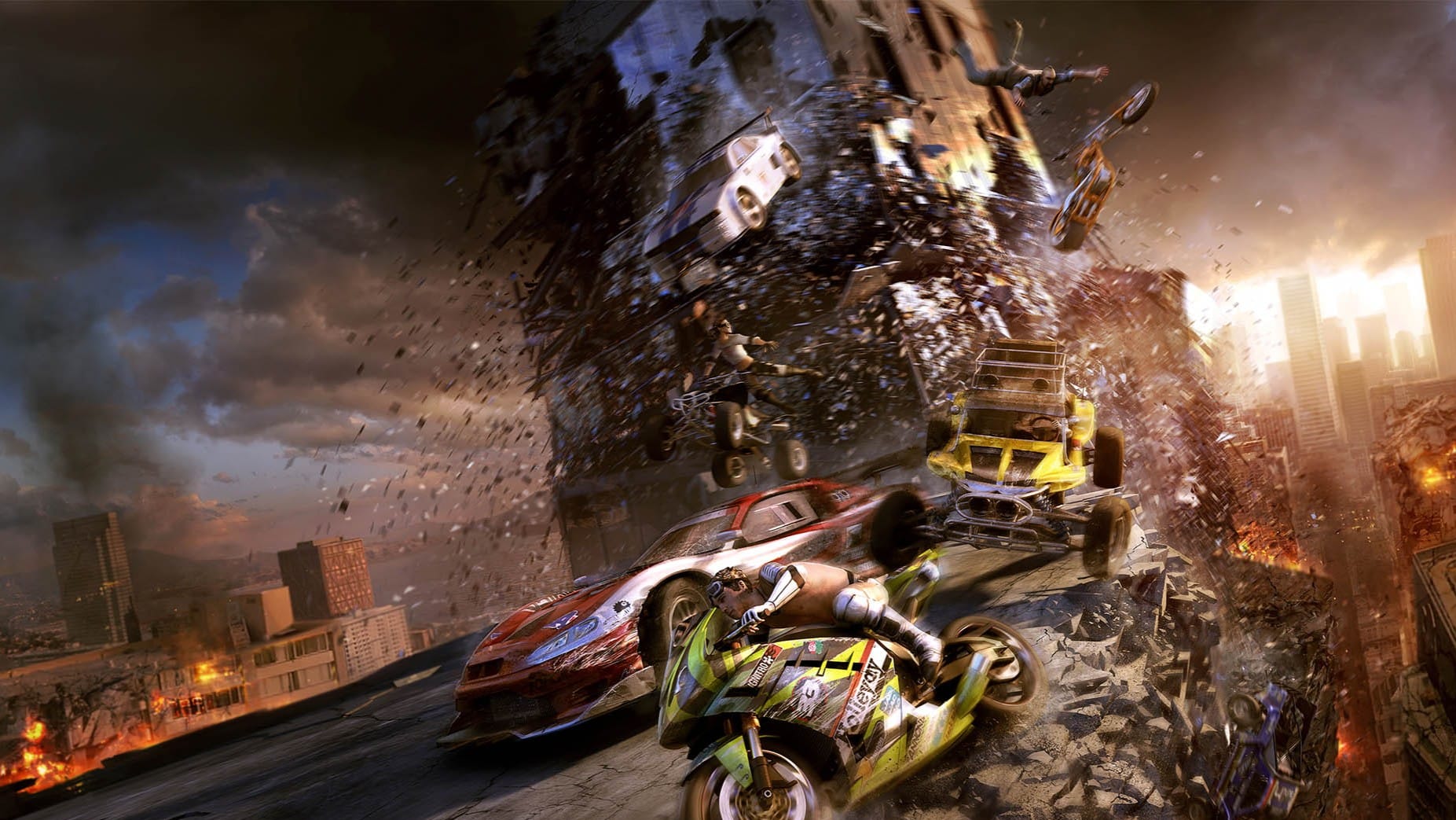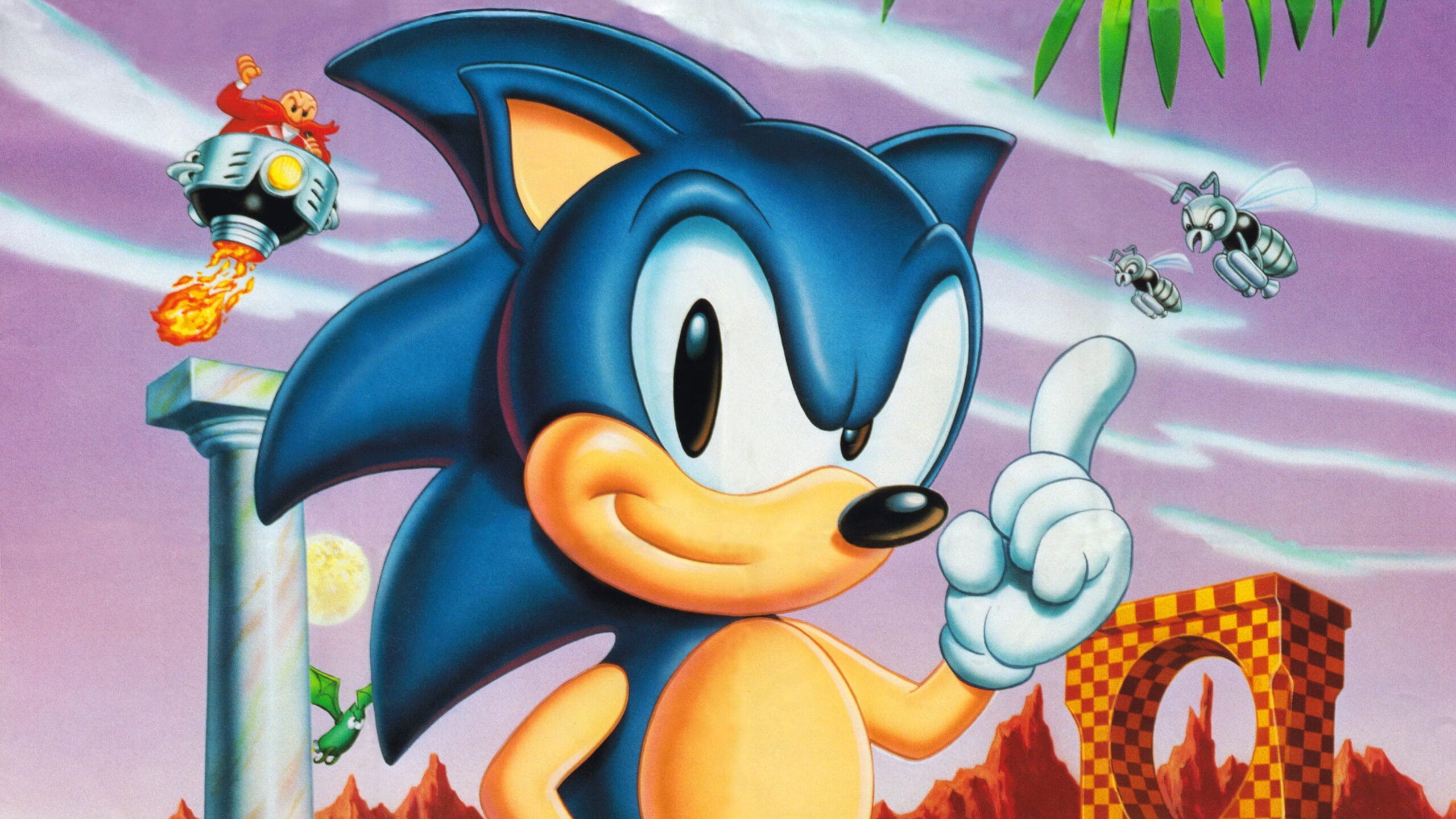The PlayStation 1, a console that revolutionized gaming in the late 90s, wasn’t just about 3D platformers and RPGs. It also housed a vibrant scene for shoot ’em ups, or “shmups,” a genre that demands quick reflexes and strategic thinking. From vertical scrolling bullet hells to horizontal side-scrollers, the PS1 offered a diverse range of shmup experiences that continue to captivate retro gamers today.
For those unfamiliar, a “shmup” is a genre of video game in which the player controls a vehicle (usually a spaceship or aircraft) and shoots at waves of enemies while dodging their projectiles. It’s a test of skill, precision, and pattern recognition. The PS1, with its enhanced graphical capabilities and CD-ROM format, brought a new level of visual and auditory fidelity to the genre.
This article aims to be your definitive guide to 20 essential shmup games on the PlayStation 1. We’ve carefully curated this list based on factors like gameplay mechanics, visual and audio presentation, innovation, and lasting appeal. Whether you’re a seasoned shmup veteran or a curious newcomer, you’ll find plenty to enjoy in these classic titles.
Thunder Force V: Perfect System
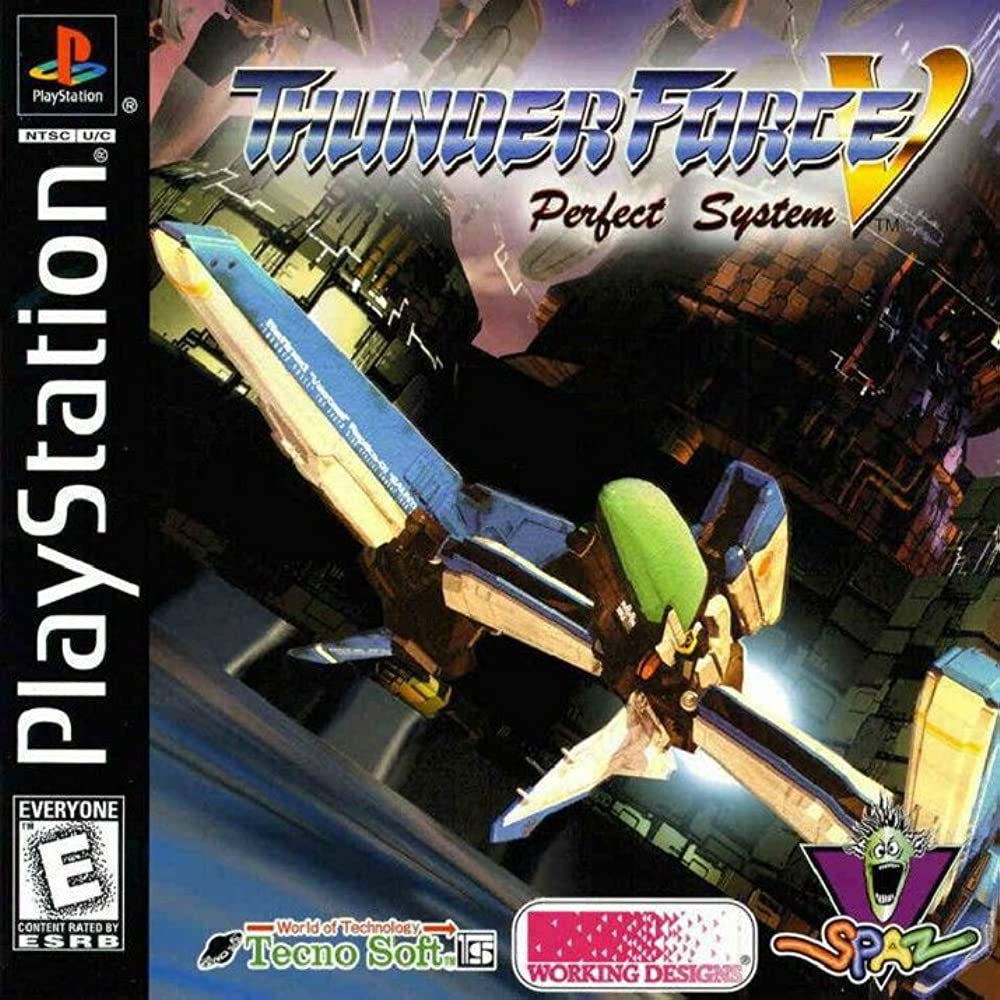
- Developer: Tecno Soft
- Release Year: 1998
Thunder Force V: Perfect System pushes the PS1’s hardware to its limits. How many PS1 titles can claim buttery 60fps action while the screen is littered with massive sprites and enough laser fire to illuminate a small planet? Its 3D graphics are stunning, with detailed backgrounds and smooth animations. The gameplay is fast-paced and intense, with a wide array of weapons and power-ups. The soundtrack is also exceptional, adding to the game’s adrenaline-fueled atmosphere. It’s challenging, sure, but it’s the kind of difficulty that feels earned, not cheap.
Why It's Worth Playing: Thunder Force V represents a peak of what dedicated developers could achieve when they prioritized smooth gameplay over flashy polygons. In an era obsessed with 3D, this game stood its ground with pixel-perfect artistry and relentless action. IMO, it’s the perfect entry point for anyone skeptical about 2D shooters on a 3D-heavy console.
R-Type Delta
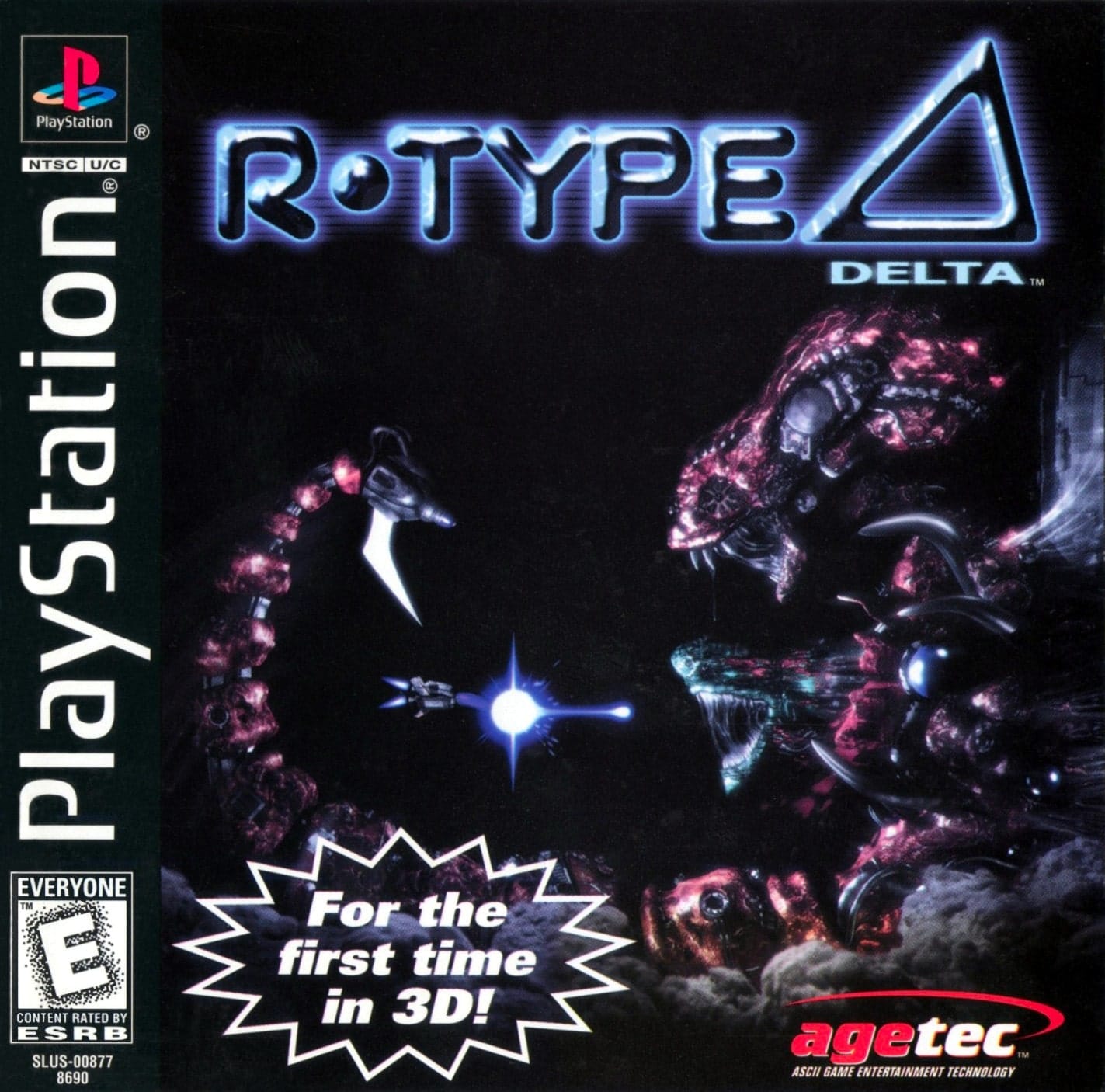
- Developer: Irem
- Release Year: 1998
Irem looked at the jump to 3D and said, “Sure, we can do that,” but then made sure the experience was still utterly, soul-crushingly R-Type. The shift to pre-rendered 3D models was a gamble, but it paid off by giving the game’s bio-mechanical horrors a new, grotesque weight. You ever feel a level staring back at you? The first time you navigate the pulsating, organic corridors of the second stage, you’ll know exactly what I mean. The difficulty is legendary, a brutal, unforgiving gauntlet that will have you sweating. But it’s never unfair—every death feels like your own mistake, a lesson learned the hard way.
Why It's Worth Playing: R-Type Delta is essential because it’s a masterclass in atmosphere and tension. It proves that a shooter can be more than just a high-score chase; it can be a harrowing journey through a dying universe. This isn’t a game you simply play; you survive it, and that victory, that one clean run, feels like a genuine accomplishment. It’s a dark, demanding, and unforgettable pillar of the PS1 library.
Einhänder
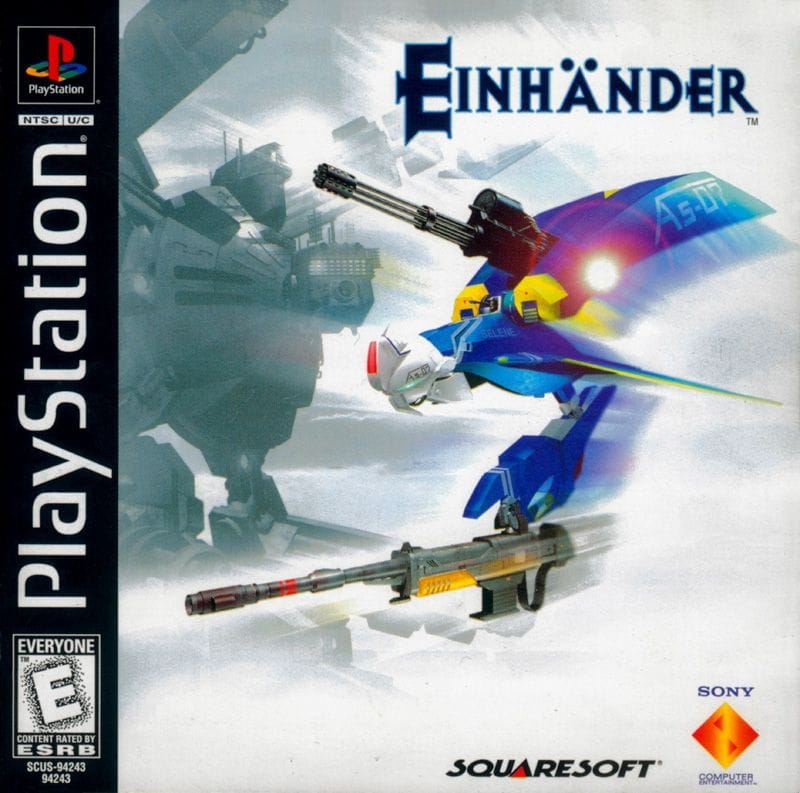
- Developer: Square
- Release Year: 1997
While everyone else was making games, Square was directing a blockbuster anime cyberpunk thriller that just happened to be a horizontal shooter named Einhänder. The gameplay hook is sheer genius. Why bother with boring old power-ups when you can just rip the weapons right off your enemies? And you’re not just carrying one; you can stockpile them on your ship’s underside, switching tactics on the fly. And can we talk about the soundtrack? It’s a pulse-pounding, techno-rock masterpiece that perfectly matches the breakneck pace of the action. The levels themselves are a tour de force, shifting from dizzying aerial battles over a futuristic city to tense, claustrophobic tunnel runs.
Why It's Worth Playing: Einhänder isn’t afraid to be cinematic without sacrificing its razor-sharp gameplay. In a genre often focused on retro purity, Einhänder dared to be a next-gen spectacle, and it absolutely nailed it. It’s a unique, essential experience that every PS1 owner should witness.
G-Darius
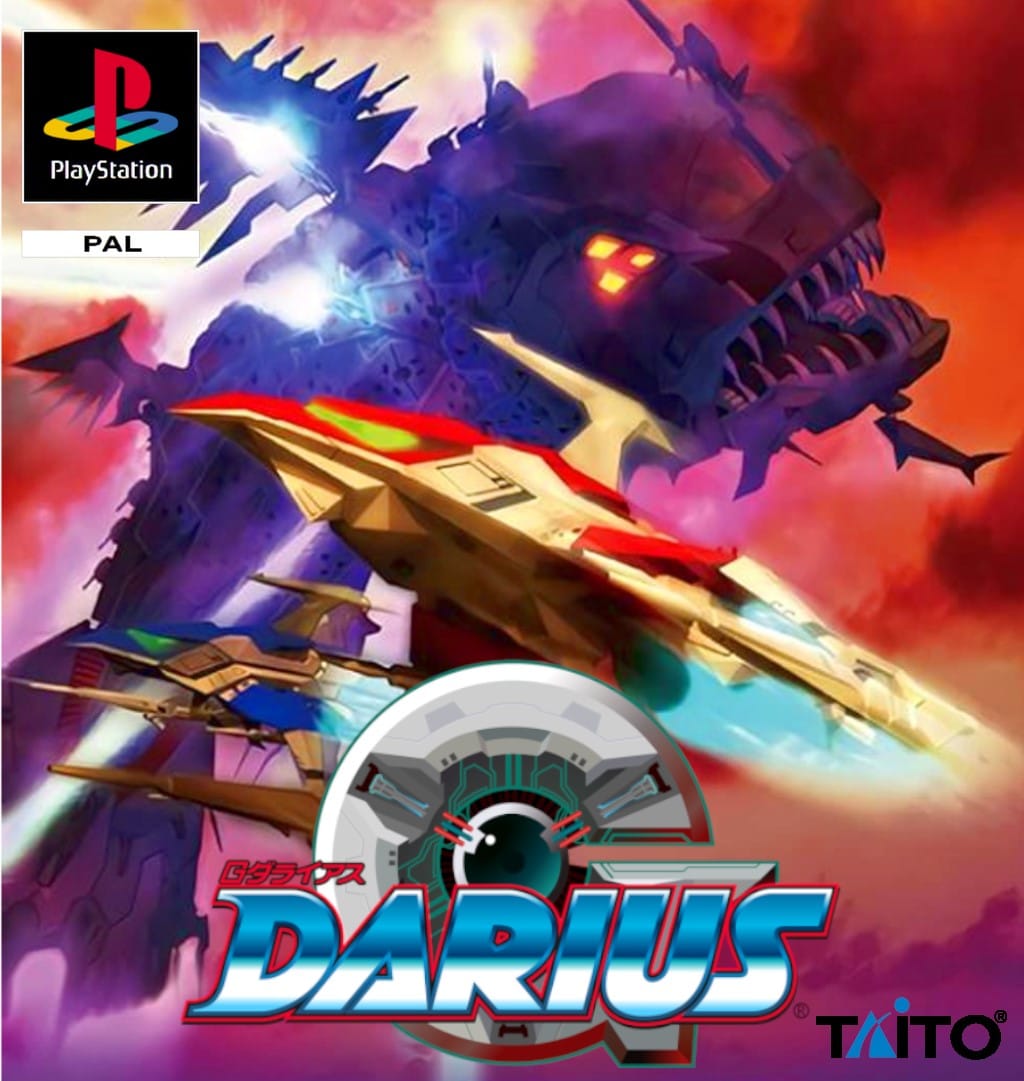
- Developer: Taito
- Release Year: 1998
G-Darius leverages the PS1’s power to deliver some of the most impressive sprite-based 3D environments of the era. The game’s unique “capture ball” system allows players to capture enemies and use their attacks against them. Mastering the capture mechanic and learning the best times to initiate a beam struggle is the key to conquering the game. And with multiple branching paths, no two playthroughs are exactly the same. Do you take the easier route or gamble on a harder path for a bigger score? It’s a game that rewards curiosity and sheer audacity.
Why It's Worth Playing: G-Darius is essential because takes a single mechanic and builds an entire world of strategic possibilities around it. The spectacle of its beam duels remains unmatched, offering a unique brand of shooter gameplay you simply won’t find anywhere else. It’s a glorious, chaotic, and incredibly satisfying arcade experience.
RayStorm

- Developer: Taito
- Release Year: 1996
RayStorm was an early adopter’s dream, showcasing what the PlayStation could do with its polygonal prowess. The gameplay, however, is pure RayForce. The lock-on laser system is the star of the show. Holding down the button to paint targets across the ground and air, then releasing a satisfying web of destruction, is a tactical joy. It forces you to manage the battlefield vertically, constantly dividing your attention between immediate airborne threats and the more dangerous ground installations below. It’s a lot to handle, but that moment when you clear an entire screen of enemies with one perfectly timed lock-on volley is pure serotonin.
Why It's Worth Playing: RayStorm is a slice of history that bridges between the pixel-art classics and the polygonal future, and a damn fun one at that. It’s the foundation that its sequel, RayCrisis, would later refine. With its tight mechanics and high-energy combat, RayStorm is one of the PS1’s most polished and exhilarating vertical shooters.
Gradius Gaiden

- Developer: Konami
- Release Year: 1997
Gradius Gaiden takes the classic Gradius formula—that perfect, risk-reward power-up bar—and refines it to an absolute sheen. The sheer variety here is fantastic. Four unique ships? Each with its own loadout and, crucially, its own style of Options? Sign me up. The difficulty is pure, uncut Gradius. You know the drill: die at the wrong moment and you’re sent back to a checkpoint as a pathetic, powerless speck, facing down impossible odds. The sprite work is gorgeous, a final hurrah for 2D artistry before Konami fully committed to 3D with Gradius V. This is Gradius at its most creatively unhinged, and it’s a glorious sight to behold.
Why It's Worth Playing: Gradius Gaiden is a lovingly crafted, PlayStation-exclusive that stands shoulder-to-shoulder with the very best in the series. It's the ultimate version of that classic formula, packed with creativity and challenge. Yes, you'll need to import it or seek out other means to play it, but the effort is 100% worth it.
DoDonPachi
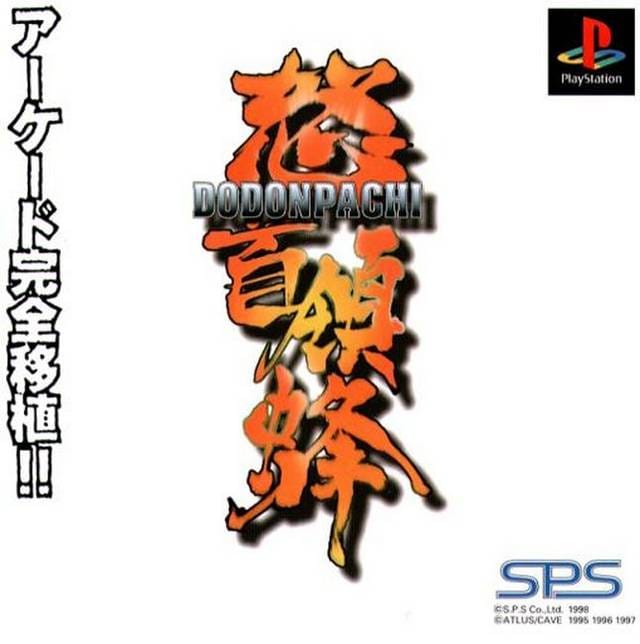
- Developer: Cave
- Release Year: 1997
DoDonPachi pioneered the modern danmaku (bullet hell) genre, and the PS1 port is one of the best ways to experience it from the comfort of your home. It’s not just about survival; it’s about dancing through the storm. The scoring system is where the real addiction lies. It’s all about the chain. Let your combo meter drop, and you might as well just restart. And the atmosphere? It’s pure, unapologetic arcade insanity. Sure, it’s hard. Really hard. But the difficulty curve is so perfectly crafted that each failure feels like a lesson, not a punishment. You’ll always know exactly what you did wrong. Mostly.
Why It's Worth Playing: When it comes to bullet hell shoot 'em ups, DoDonPachi is often hailed as the gold standard — and for good reason. It’s a masterpiece of design where risk and reward are perfectly balanced on the edge of a razor. If you want to understand where modern bullet hell games came from, you start right here. For those who crave high-intensity shmup action, DoDonPachi is an absolutely recommended.
Raiden DX
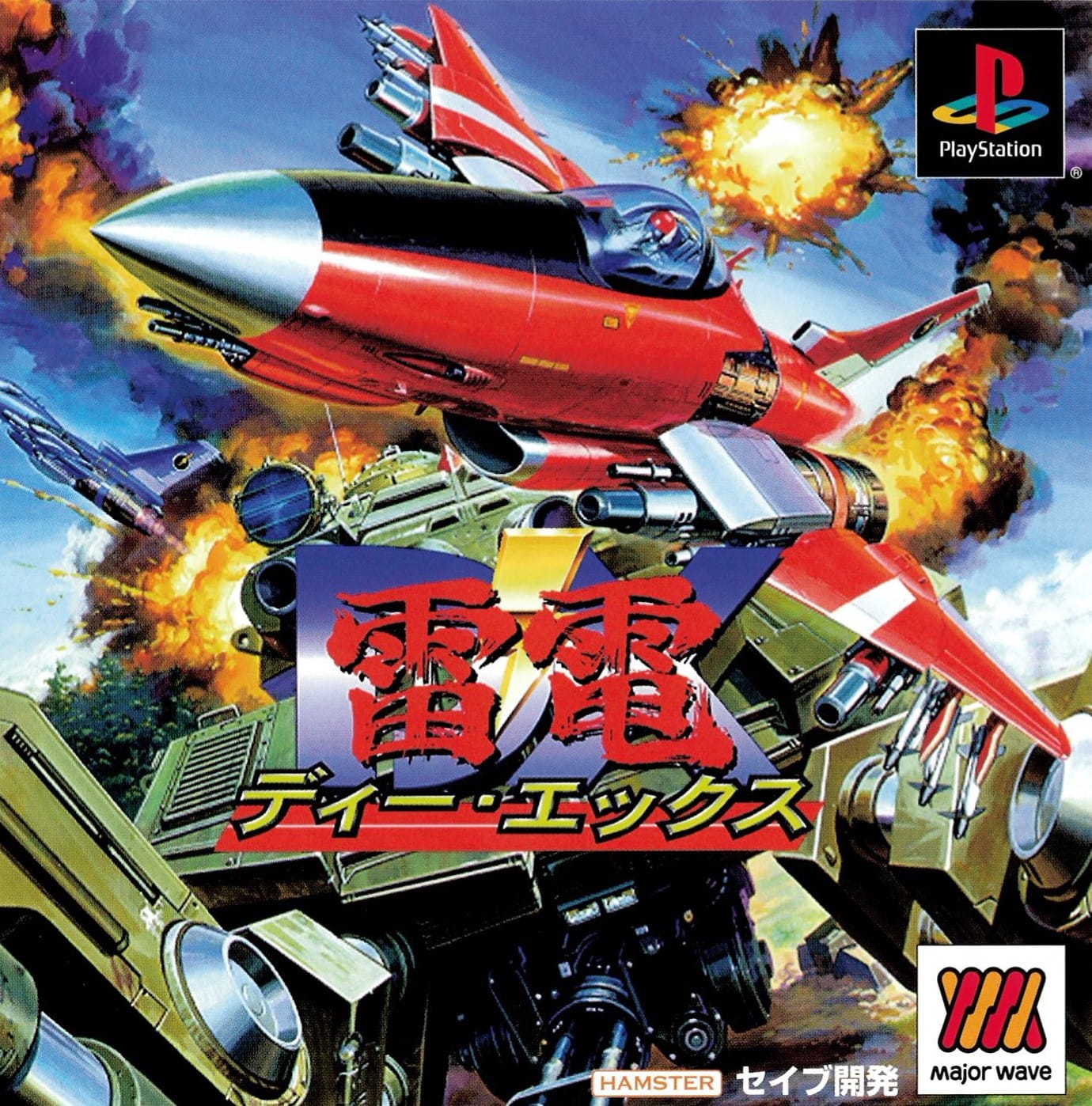
- Developer: Seibu Kaihatsu
- Release Date: 1997 (Japan)
If Raiden II was the hit single, Raiden DX is the deluxe anniversary edition with all the B-sides and remixes. The centerpiece is the brilliant Training Mode. Ever get frustrated dying on the same stage over and over? This mode lets you practice any individual stage with a set number of lives, allowing you to master its patterns and enemy placements without having to replay the entire game. It’s an absolute godsend for improving your skills and a feature more shooters should have stolen. But the content doesn’t stop there. You also get the full Raiden II campaign, an exclusive “Alpha” mission, and a “Score Attack” mode that focuses purely on chasing that high score. It’s a smorgasbord of vertical shooting goodness.
Why It's Worth Playing: Raiden DX is the quintessential version of a legendary shooter. It’s the perfect entry point for newcomers to the genre thanks to its accessible Training Mode, while offering enough depth and content to satisfy veterans. In a world of complex mechanics, sometimes you just want a perfectly crafted, straightforward blast-a-thon. Raiden DX delivers that in spades, making it an essential pillar of any PS1 shmup collection.
Strikers 1945 II

- Developer: Psikyo
- Release Year: 1997
Strikers 1945 II had a very simple, very effective philosophy: fast ships, chunky bullets, and scoring systems that reward aggressive play. Each of the eight planes has a completely unique standard shot and a massively powerful charge attack. This simple addition forces you to learn your chosen ship inside and out, turning every run into a strategic balance of when to pepper enemies and when to unleash hell. Enemy fire is often large, brightly colored, and easy to track against the detailed sprite-based backgrounds. Don’t mistake this for being easy, though. The screen quickly becomes a deadly mosaic of patterns you need to weave through.
Why It's Worth Playing: Strikers 1945 II is a masterclass in focused, score-driven design. The PS1 port is fantastic, capturing the arcade experience perfectly with barely any load times. It's the definition of "easy to learn, tough to master." If you want a shmup that gets straight to the point and delivers relentless, polished action, this Psikyo classic is an absolute must-play. It's pure arcade soul in a CD case.
Harmful Park
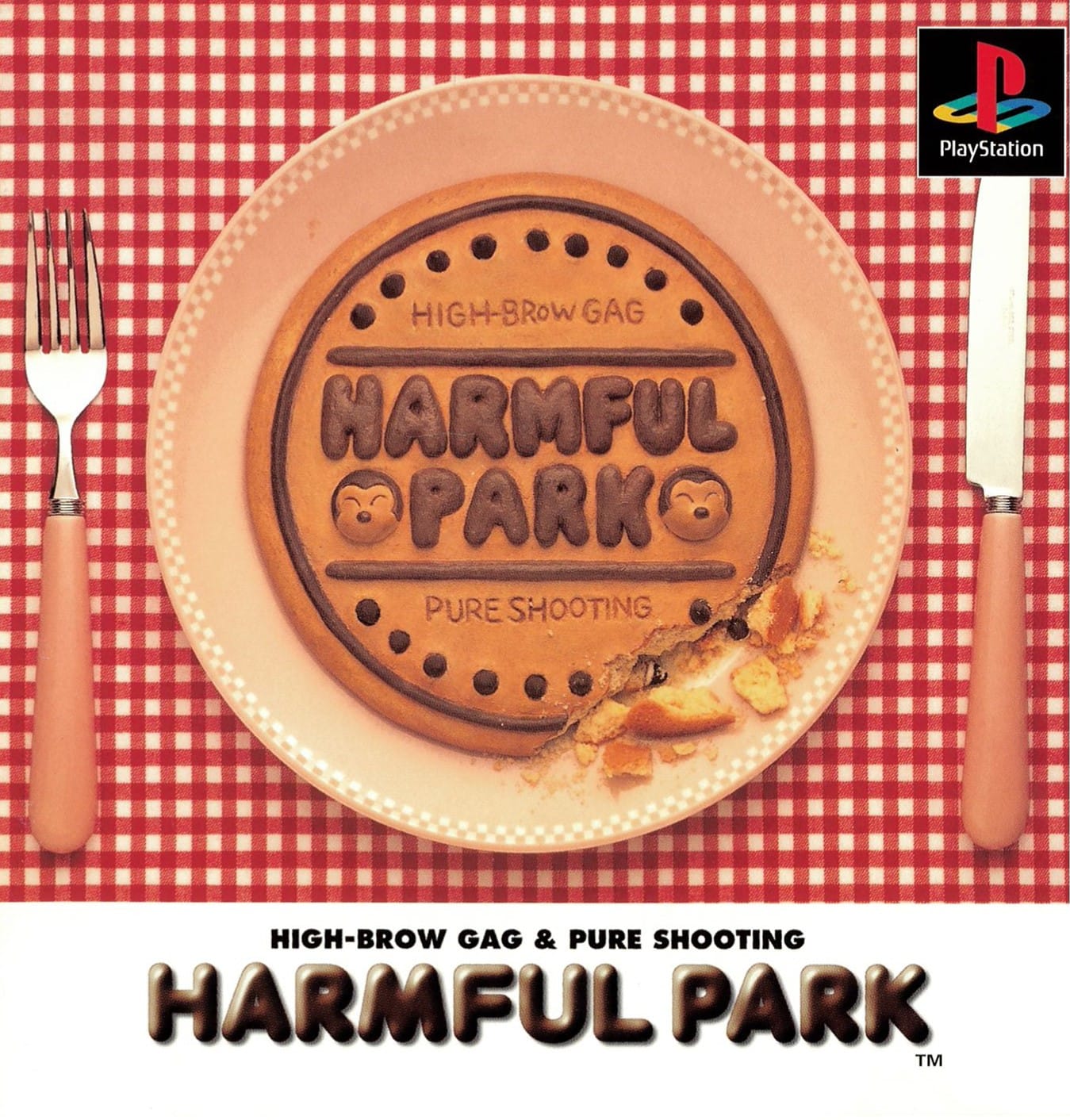
- Developer: Sky Think System
- Release Year: 1997
Most shoot ‘em ups are about saving the galaxy, battling biomechanical horrors, and enduring grimdark futures. Harmful Park? It’s about a little girl in a mech suit fighting an army of angry toys and evil food. You’ll battle giant crayons, dodging attacks from evil ice cream cones, and take on a boss that’s literally a massive, grumpy-looking burger. But don’t let the adorable aesthetic fool you; the gameplay is sharp, accessible, and surprisingly deep. The weapon power-up system is intuitive, and the hitbox is mercifully clear, making it a fantastic entry point for shmup newcomers. It’s the kind of game that just makes you smile while you’re playing it.
Why It's Worth Playing: Harmful Park is essential because it proves that shoot ‘em ups can be whimsical, funny, and incredibly creative without sacrificing solid gameplay. It’s a breath of fresh air, a collector’s holy grail that actually lives up to its reputation. If you’re tired of depressing space operas and want a shmup that feels like a playful, imaginative romp, Harmful Park is highly recommended.
Gekioh Shooting King (Shienryu)

- Developer: Warashi
- Release Year: 1997
Ever crave that classic, no-frills arcade experience without the brutal difficulty curve? Enter Gekioh: Shooting King. Released in the West as Shienryu, this shooter doesn’t try to reinvent the wheel with complex mechanics; instead, it focuses on delivering polished, straightforward action that’s easy to pick up but satisfying to master. The action is fast, the explosions are chunky, and the sprite work is crisp and detailed. But the real standout feature is the “Shooting King” mode, hinted at in the title. This brilliant system dynamically adjusts the game’s rank—its difficulty—based on your performance. It’s a fantastic way to keep players of all skill levels engaged without feeling punishing or patronizing.
Why It's Worth Playing: Gekioh: Shooting King is the video game equivalent of a perfectly made pizza—reliable, delicious, and exactly what you want sometimes. The dynamic difficulty system is a genius touch that makes it a great choice for both newcomers and veterans looking for a relaxed blast. It may not be the flashiest game on the PS1, but its rock-solid fundamentals and pure fun factor make it an unsung hero of the library.
Philosoma
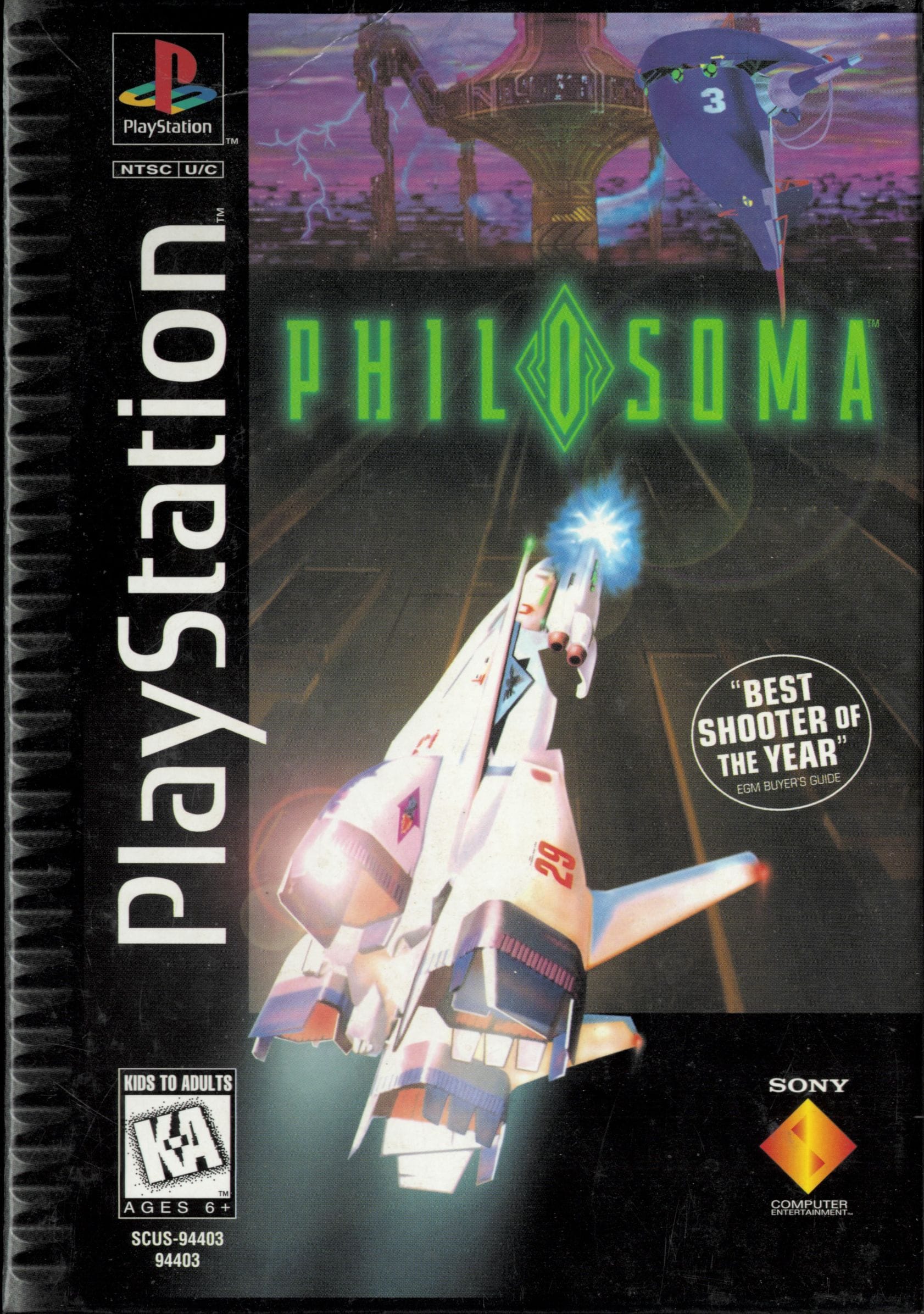
- Developer: G-Artists
- Release Year: 1995
Philosoma was an early flagship title for the PlayStation, and it absolutely screams “ambition.” It’s a game that tries to do everything: multiple gameplay perspectives, a branching narrative, and a dark, serious story told through slick FMV sequences. One moment you’re in a behind-the-ship 3D view, dodging asteroids. Next, the camera swings to a classic 2D side-scrolling section. Then, without warning, you’re in a first-person turret sequence. The story of a lone pilot uncovering a galactic conspiracy is genuinely engaging, and the Production I.G.-animated cutscenes still ooze style. The soundtrack is a haunting, atmospheric masterpiece that builds tension beautifully.
Why It's Worth Playing: Philosoma is a glimpse into an alternate future where shooters were more like interactive movies. While its gameplay hasn't aged perfectly, its cinematic ambition, dark tone, and unique structure make it a must-play for anyone interested in the weird and wonderful side of the PS1 library. It’s a fascinating, flawed trip worth taking at least once.
In the Hunt
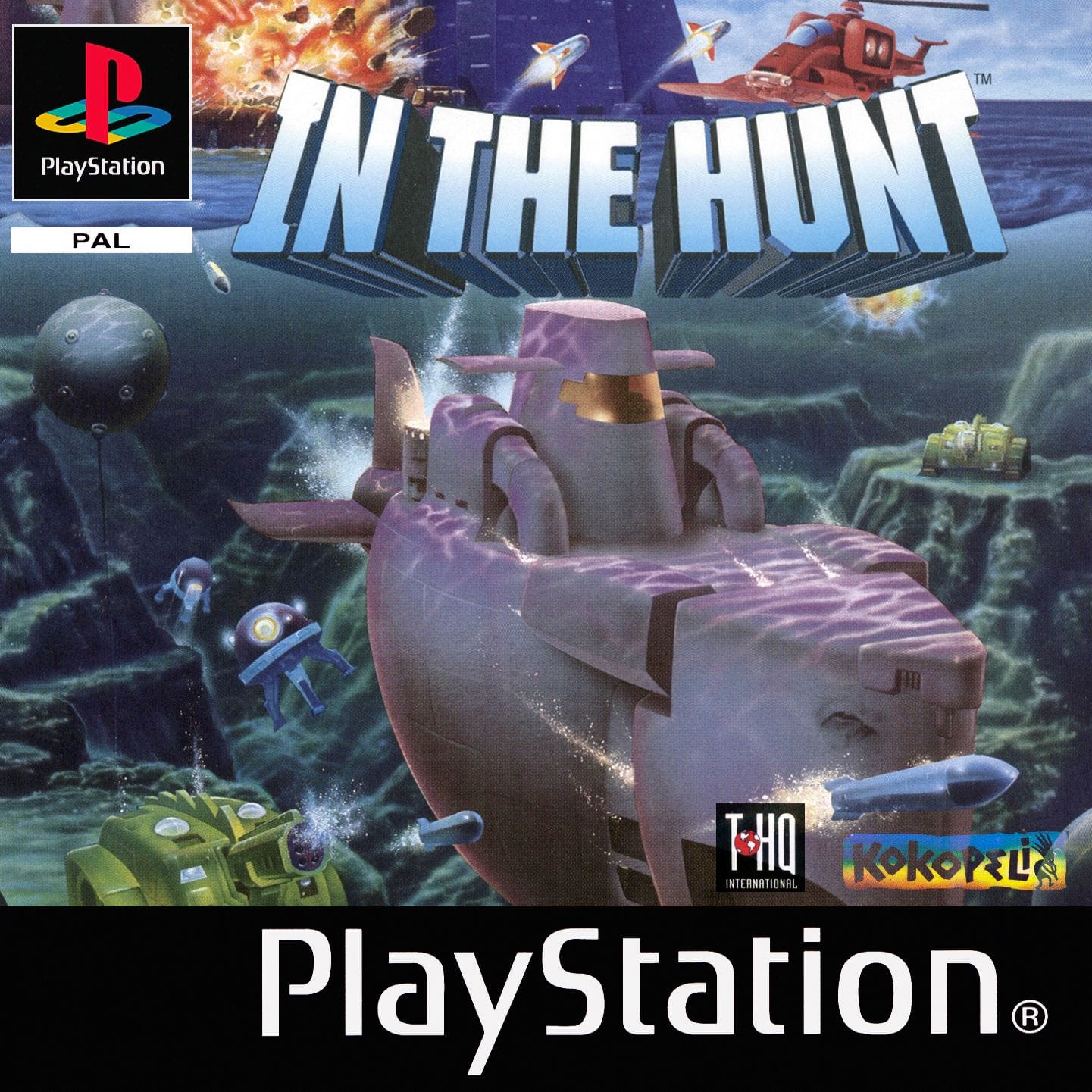
- Developer: Irem
- Release Date: 1995
Okay, let’s get the genre police out of the way first. While In the Hunt may have run-and-gun elements, play it for five minutes and you’ll realize its soul is 100% pure shmup. The gameplay is defined by its deliberate, weighty movement. Your submarine isn’t zippy; it lumbers through the water, forcing you to think ahead and plan your dodges. And the bosses? Each one feels like a monumental battle. The animation is fluid, the backgrounds are dense with destructible objects, and the sense of being in a living, aquatic world is palpable. The PS1 port is fantastic, faithfully capturing the arcade experience.
Why It's Worth Playing: In the Hunt offers a refreshing change of pace from the usual high-speed action of the genre. It's a crucial piece of Irem’s history and a must-play for anyone who appreciates the art of animation in video games. This isn't just a shooter; it's an underwater tour de force.
SD Gundam Over Galaxian
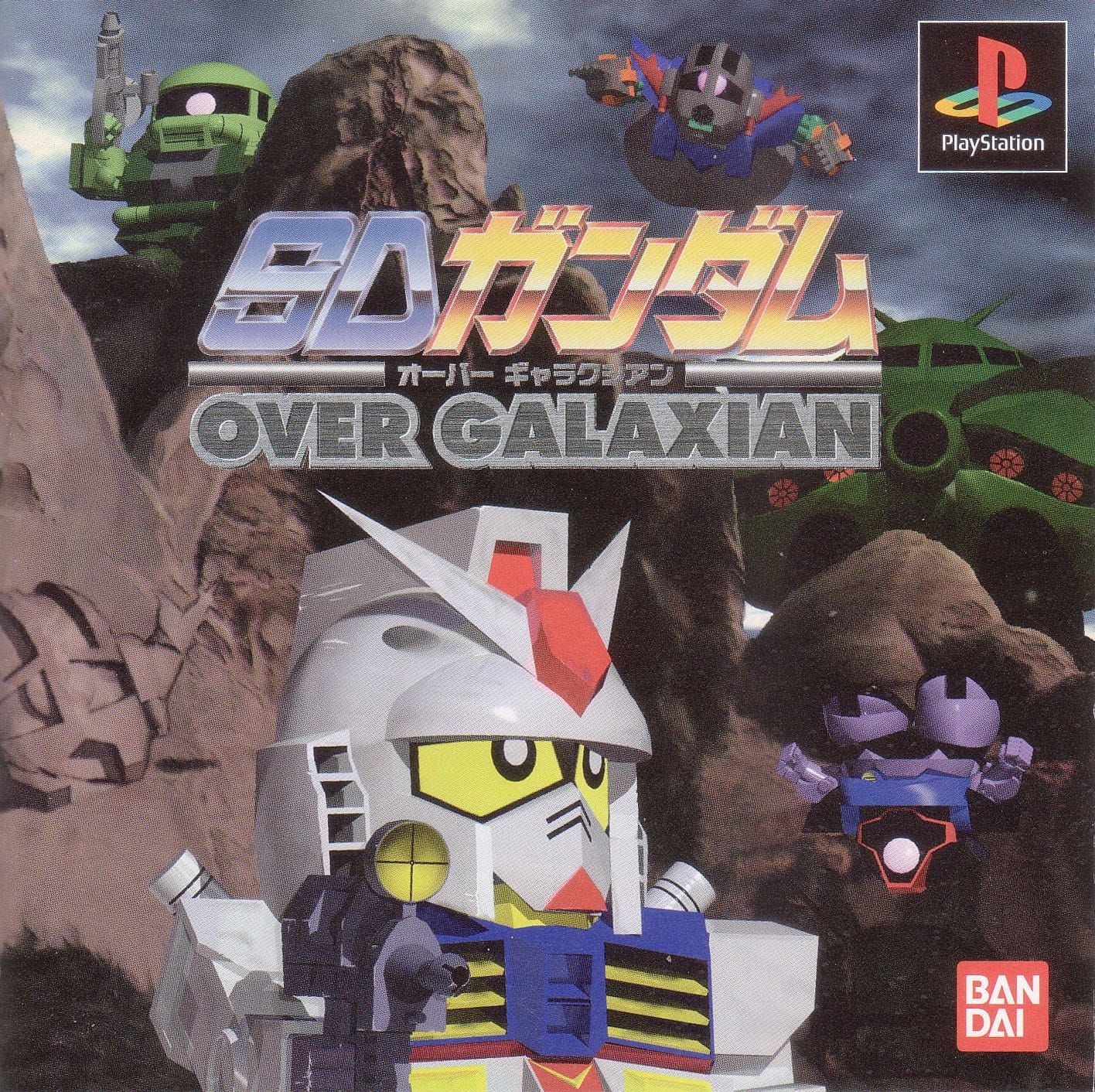
- Developer: Banpresto
- Release Year: 1996
You see the words “SD Gundam” and you may think of adorable chibi mobile suits bouncing around. But don’t let the cute looks fool you—this game means business. The difficulty ramps up quickly, and one mistimed shot can lead to a cascade of failures. You can’t just hold down the fire button. Your shots have a travel time, forcing you to lead your targets and anticipate their paths. This turns every encounter into a nerve-wracking game of prediction and timing. It’s the perfect example of a game that’s easy to understand but difficult to master, offering a pure, concentrated dose of arcade challenge.
Why It's Worth Playing: SD Gundam Over Galaxian is essential because it blends adorable fan service with hardcore, strategic gameplay. It’s a fantastic palette cleanser from the usual scrolling fare and a must-play for fans of fixed-screen shooters or anyone who thinks "cute" can't also be "hardcore." A hidden gem that proves great ideas come in small packages.
RayCrisis: Series Termination
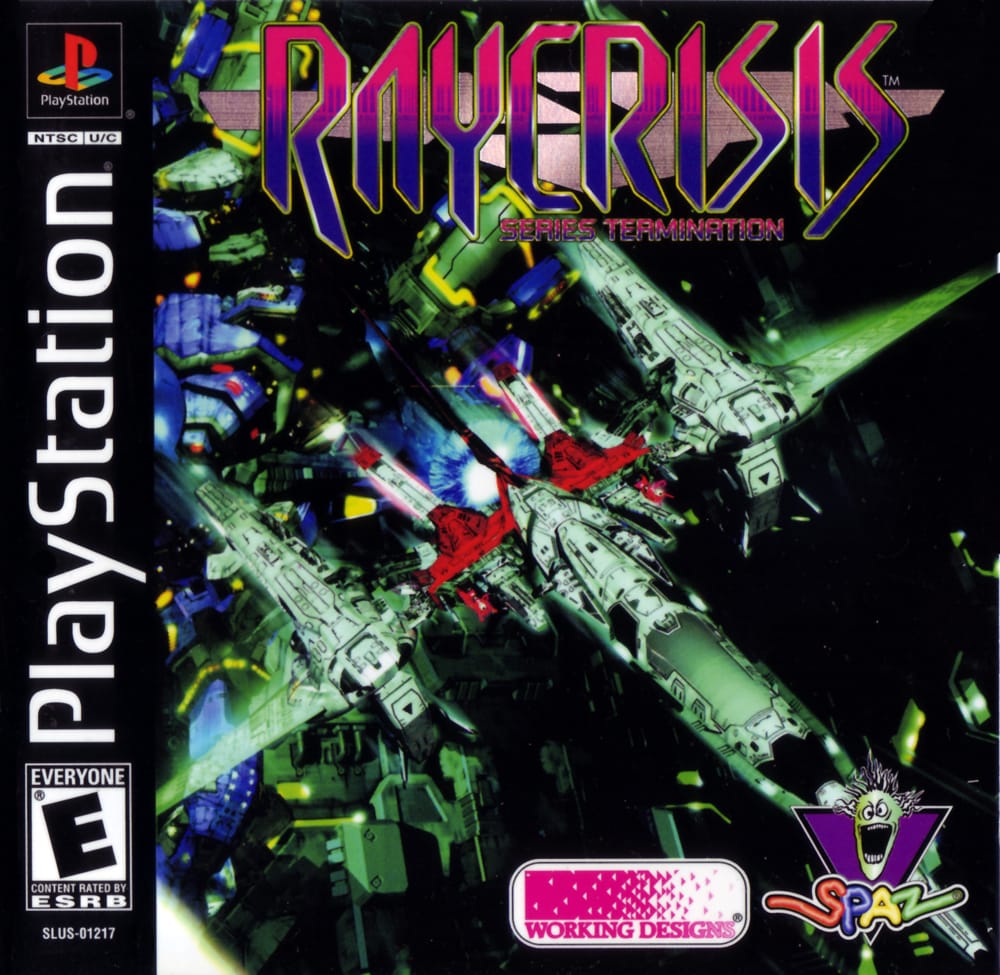
- Developer: Taito
- Release Date: 2000
RayCrisis closes out Taito’s Ray trilogy with a prequel that dials up the sci-fi weirdness and visual flair. The core mechanic is the “SECTION” system. You’re no longer just reacting to threats; you’re actively hunting them down, desperately painting as many targets as possible to build your multiplier before the clock hits zero.. The music shifts dynamically with your performance, building to a frantic crescendo as the timer winds down. The branching paths are determined by your performance, encouraging replayability to see the different endings and unlock the true final boss. It’s a more demanding and abstract experience than RayStorm, but mastering its systems is incredibly rewarding.
Why It's Worth Playing: RayCrisis is essential because it’s the most innovative and intense entry in the RaySeries. It takes a familiar lock-on mechanic and forces you to play with a relentless, score-attack mentality. It's a thinker's shmup that rewards strategy and speed over pure memorization. If you found RayStorm engaging but wanted a more hardcore challenge, this is your game. A brilliant and often overlooked capstone to a legendary trilogy.
Macross: Do You Remember Love?
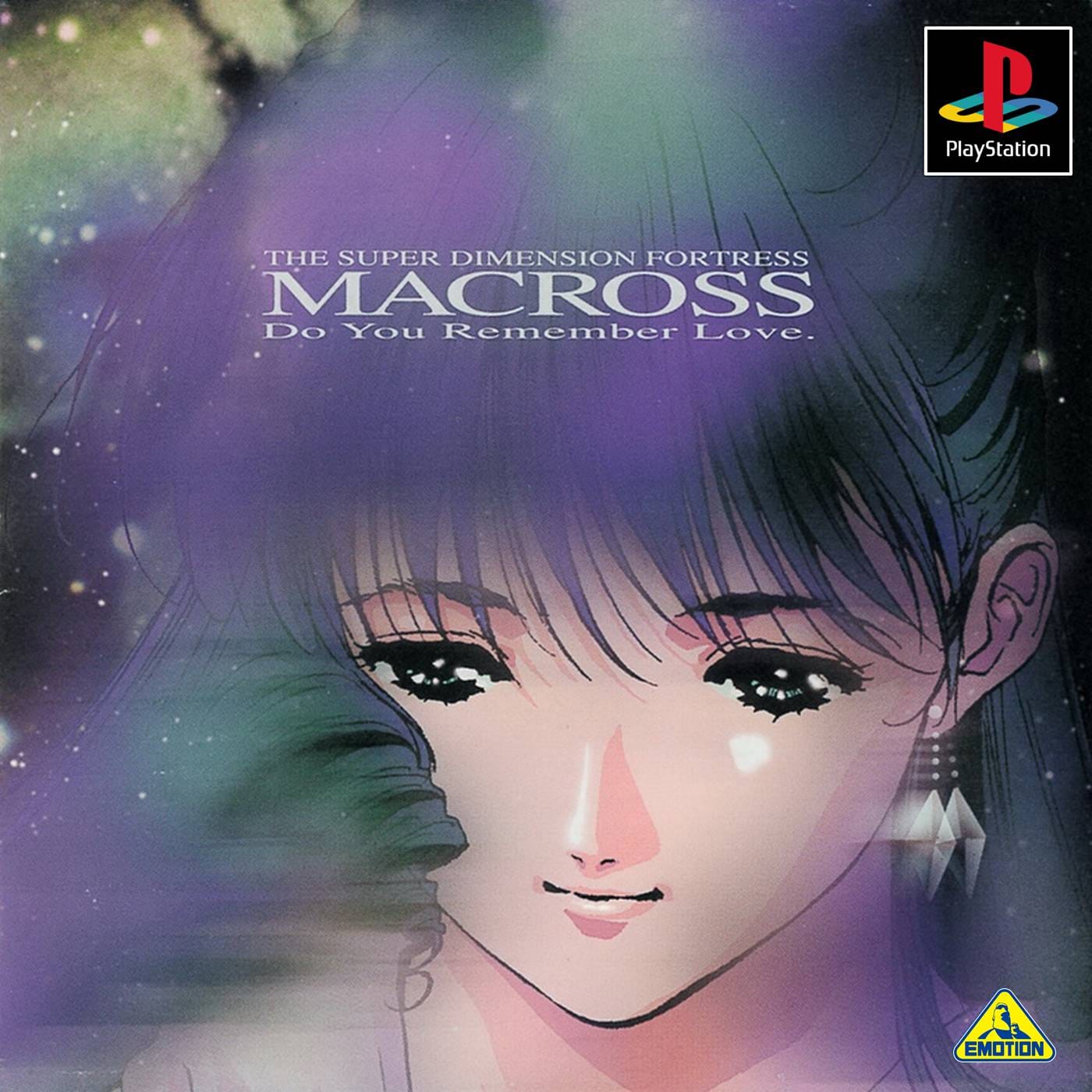
- Developer: Banpresto
- Release Year: 1999
Based on the beloved 1984 anime film, Macross: Do You Remember Love? brings the spectacle and drama of battling the Zentradi armada to the PlayStation with impressive fidelity. Players step into the cockpit of the VF-1 Valkyrie as pilot Hikaru Ichijyo, engaging in side-scrolling shootouts in deep space and atmospheric combat zones. The game is packed with gorgeous sprite work and cutscenes that faithfully recreate the film’s most memorable moments. The soundtrack is, of course, legendary, featuring those classic tunes that define the series.
Why It's Worth Playing: Macross: Do You Remember Love? offers a unique, tactical layer of depth you won't find anywhere else. It's an essential play for any Macross fan and a fantastic, unique entry in the PS1's library for anyone who wants their shooting action with a heavy dose of mechanical versatility and anime flair. A true gem that makes you feel like the hero of the story.
70’s Robot Anime Geppy-X
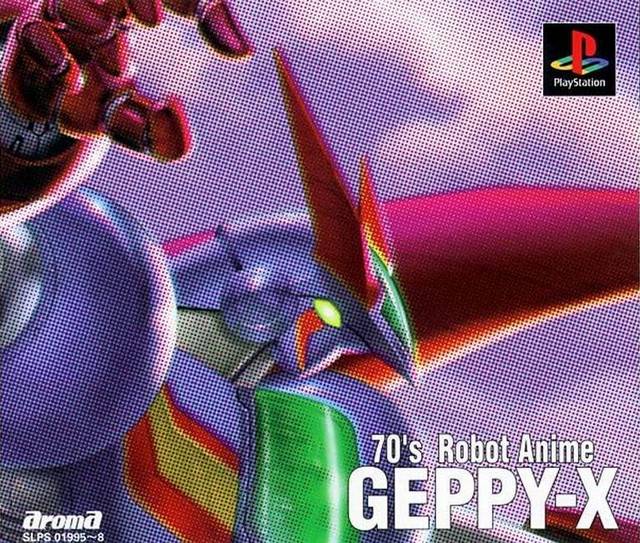
- Developer: Imagineer
- Release Date: 1999
70’s Robot Anime Geppy-X is a full-blown theatrical experience that captures the spirit of classic ’70s robot anime with its retro aesthetic and over-the-top action. You control Geppy-X, battling waves of enemy mechs. As you defeat enemies, this gauge fills, allowing you to unleash devastating special attacks like the obligatory “Geppy Beam” or a screen-cleaning “Final Geppy Attack.” From the opening credits to fake commercial breaks and next-episode previews, this horizontal shooter fully commits to its retro anime aesthetic. It’s a game made by fans, for fans, of a very specific era.
Why It's Worth Playing: Geppy-X is a throwback to a bygone era of animation, executed with genuine affection and a great understanding of what made those shows so memorable. If you have any fondness for Mazinger Z, Getter Robo, or that classic super robot spirit, this game is an absolute joy. It’s a niche title, but for the right person, it’s an unforgettable blast of pure nostalgia.
Sonic Wings Special
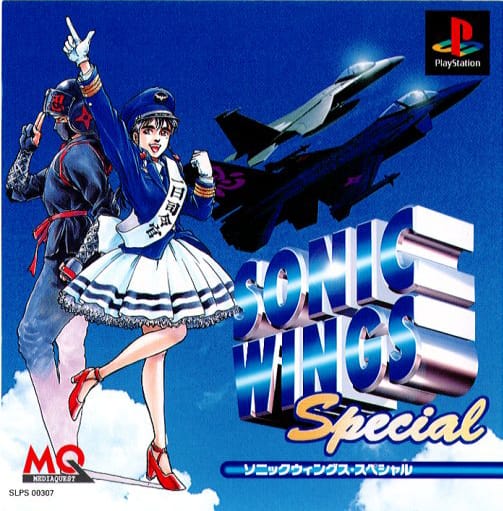
- Developer: Video System
- Release Year: 1996
If you thought shoot ’em ups were a solitary affair, Sonic Wings Special is here to prove you gloriously wrong. The roster is a thing of beauty. Where else can you choose between a super spy, a dolphin in a mech suit, a Viking ship, and a pair of tiny pro-wrestlers flying a biplane? Each character has unique weapons and speed, drastically altering how you approach the game. It’s the perfect “pick up and play” shooter where skill is important, but adapting to the sheer unpredictability of it all is half the battle. The two-player mode is an absolute riot, allowing players to rotate their screens for an authentic arcade experience.
Why It's Worth Playing: Sonic Wings Special is beautiful, hilarious, and unadulterated chaos, especially when you have a friend alongside you. When you're tired of perfecting intricate scoring chains and just want to blow things up, this is the game you reach for. An essential title for anyone who believes gaming is best when it's a shared, chaotic experience.
Time Bokan Series: Bokan Desuyo
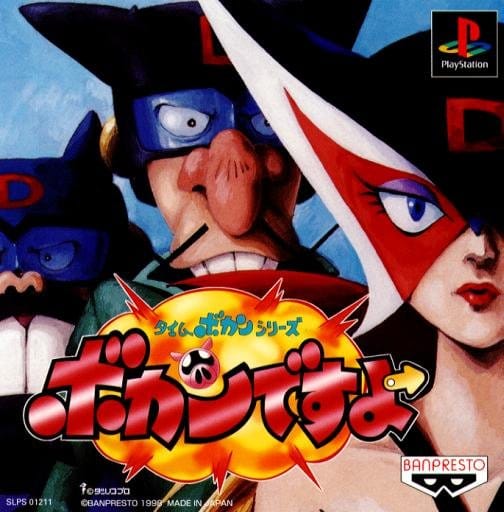
- Developer: Banpresto
- Release Year: 1997
Just when you think you’ve seen every trick the PS1 shmup library has to offer, along comes something like Bokan Desuyo. Based on the classic Time Bokan anime series, the game is a solid, accessible horizontal shooter, but the joy comes from the presentation and inventive stage themes. One moment you’re battling dinosaur-riding cavemen, the next you’re dodging cannon fire in the age of pirates. The visual style is bright, cartoonish, and packed with personality. The game is filled with silly animations, goofy enemy designs, and a general sense of lighthearted fun. It lacks the punishing difficulty of many of its peers, making it a fantastic and stress-free entry point for newcomers to the genre.
Why It's Worth Playing: Bokan Desuyo is essential because it’s a delightfully quirky and endlessly charming experience. It’s a shooter that values laughter and creativity as much as tight gameplay. If you loved the vibe of Harmful Park and are searching for another dose of playful, anime-inspired action, this is your holy grail. It’s a testament to the fact that some of the best gems are the ones you have to hunt for.
Gaia Seed

- Developer: Techno Soft
- Release Year: 1996
We end our list with a game that proves length isn’t everything. Gaia Seed is a brief experience, but to judge it on that alone is to miss the point entirely. Instead of collecting standard power-ups, you grab orbs that cycle through three weapon types: a vulcan shot, a laser, and a homing weapon. The catch? You can only hold a limited number of orbs for each weapon, which forces you to constantly manage your resources and adapt your strategy on the fly. It’s a system that feels decades ahead of its time. Visually, the graphics are a mix of detailed 2D sprites and early polygonal backgrounds that create a dark, futuristic aesthetic. The bosses are particularly impressive, looming menacingly over your tiny ship.
Why It's Worth Playing: A hidden gem of the PS1 library, Gaia Seed is essential because it’s a beautiful, innovative, and atmospheric. Its unique weapon system offers a tactical depth rarely seen in the genre, and its presentation is unforgettable. It’s a stunning and underappreciated classic in the PS1 shmup library—a reminder that even in a crowded field, there was always room for a game with a bold vision.
Honorable Mentions
While the 20 games listed above represent the cream of the crop, several other PS1 shmups deserve a mention. These titles may not have reached the same level of acclaim, but they still offer enjoyable experiences for shmup enthusiasts.
This game offers a unique twist on the classic Zanac formula, but it didn’t quite achieve the same level of recognition as some of the other titles on this list.
While a solid compilation of Gradius titles, it didn’t introduce enough new elements to make it a standout PS1 shmup.
A decent 3D shmup, but it lacked the polish of some of the top contenders.
A fun parody game, but not a serious competitor to the main list.
These honorable mentions highlight the depth and variety of the PS1 shmup library. While they may not have made the top 20, they still offer enjoyable gameplay and unique features that shmup fans can appreciate.
Conclusion
The PlayStation 1 was a golden age for shoot ’em ups, offering a diverse range of experiences that continue to captivate retro gamers. From the intense bullet hells of Cave to the innovative designs of Square Enix and Taito, the PS1 shmup library is a treasure trove of classic titles. We hope this guide has encouraged you to explore these classic titles and experience the thrill of retro shooting action.
Share your favorite PS1 shmup memories in the comments!

